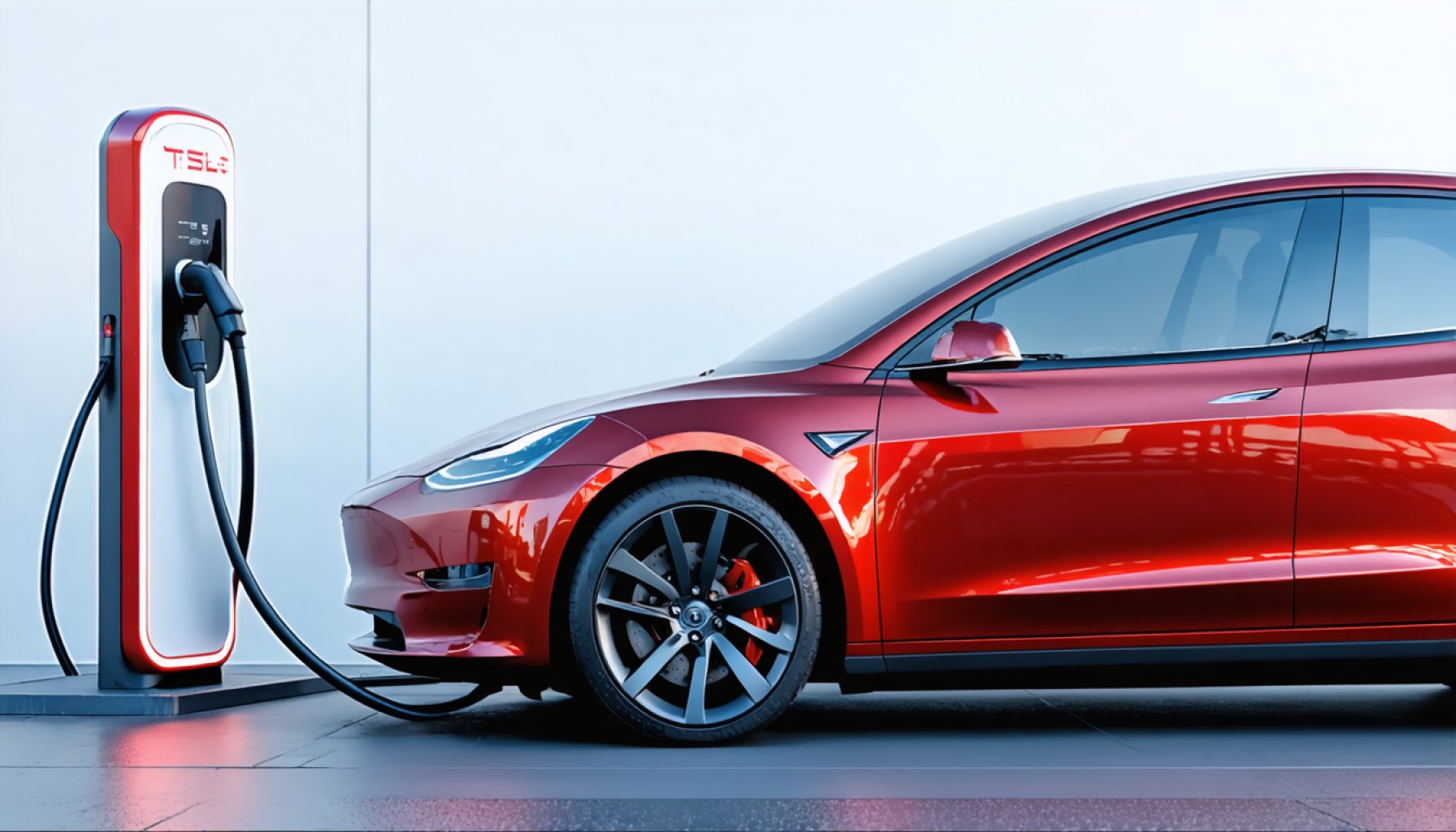- BYD’s new flash-chargers deliver 250 miles of range in just five minutes, significantly outperforming Tesla’s Superchargers.
- With these flash-chargers, BYD plans to enhance EV charging convenience at 4,000 locations across China.
- BYD surpassed Tesla in 2024 production figures, producing over 4.3 million new energy vehicles.
- Tesla’s market presence is challenged by BYD’s advancements, as indicated by a 4.8% drop in Tesla’s stock after the announcement.
- Currently, due to tariffs, BYD EVs remain unavailable to U.S. buyers, maintaining Tesla’s dominance in the American market.
- Innovation is crucial in the competitive EV market landscape, underscoring the need for Tesla to adapt.
In a twist that adds fuel to the ongoing electric vehicle (EV) race, BYD has unveiled its groundbreaking flash-chargers, casting shadows over Tesla’s once-dominant charging network. While Tesla grapples with declining sales and technical glitches, BYD’s recent announcement may redefine the future of EV charging.
Picture this: a road trip powered by BYD’s new mega-chargers, where refueling takes mere minutes rather than hours. These chargers deliver an eye-popping 250 miles of range in just five minutes, a pace nearly four times swifter than Tesla’s current Supercharger capabilities. The EV giant, rooted in China, has consistently pushed the envelope, reporting a formidable production of over 4.3 million new energy vehicles last year alone. This includes a mixture of pure EVs and plug-in hybrids, tipping the scales slightly above Tesla’s production figures in 2024.
While Tesla’s market presence is challenged by BYD’s momentum, this news finds Tesla executives scrambling to reassess strategies. The realization that BYD’s “flash chargers” output power at an impressive 1,360 kW compared to Tesla’s 325kW underscores a competitive chasm. As BYD prepares to integrate these chargers into 4,000 locations across China, it signals a new era where EVs can refuel with the speed once reserved for traditional gasoline cars.
Events on Wall Street mirrored the industry’s tremors; Tesla’s stock took a 4.8% hit following the announcement. This tangible market reaction underscores investor awareness that BYD’s advancements may irrevocably alter the competitive landscape of the EV market.
Nevertheless, the promising horizon of BYD’s infrastructure has yet to resonate in the United States due to stiff tariffs on Chinese car imports, ensuring Tesla’s reign on American soil remains unchallenged, at least for now. Currently, U.S. buyers find themselves without the option to purchase BYD EVs, rendering these technological marvels tantalizingly out of reach.
The crux of this unfolding saga highlights a pivotal moment in the EV industry’s evolution. While the technological prowess and rapid deployment strategy challenged Tesla significantly, it remains to be seen which innovative solutions Musk and his team will engineer to preserve the brand’s formidable influence and market share. As the world accelerates toward embracing sustainable energy, the greatest takeaway is clear: in this volatile race, innovation is not just an advantage—it’s a necessity for survival.
The EV Charging Revolution: How BYD’s Flash-Chargers May Outpace Tesla
Introduction
The electric vehicle (EV) landscape is experiencing a seismic shift as BYD, a major player in the Chinese automotive industry, unveils its powerful flash-charging technology. These chargers promise a rapid charging experience, sparking competitive tension with Tesla and possibly reshaping the EV charging infrastructure.
Understanding BYD’s Flash-Charging Technology
Features and Specs
– Charging Speed: BYD’s flash-chargers can deliver up to 250 miles of range in just five minutes, which is substantially faster than the current Tesla Superchargers that provide about 200 miles in 15 minutes.
– Output Power: Each flash charger boasts an impressive power output of 1,360 kW, stunningly surpassing Tesla’s 325kW.
– Deployment Plan: BYD aims to roll out these chargers across 4,000 locations in China, enhancing EV user convenience and encouraging adoption.
Real-World Implications
Market Impact and Trends
– Competitive Edge: BYD’s rapid adoption and deployment of flash-charging technology could redefine user expectations for EV recharging, leading to faster infrastructure development globally.
– Investors’ Response: Tesla’s stock fell by 4.8% following BYD’s announcement, highlighting market concerns over Tesla’s future competitiveness.
Limitations and Challenges
– Geopolitical Barriers: Chinese tariffs currently hinder BYD’s penetration into the U.S. market, allowing Tesla to maintain its dominance in America.
– Infrastructure Costs: Deploying high-power flash chargers requires significant investment, potentially affecting profit margins if not balanced by increased EV sales.
Beyond Technology: Strategic Considerations
Strategic Efforts by Tesla
While BYD’s technological surge presents a challenge, Tesla might counteract by:
– Innovating Battery Technology: A focus on lighter, more efficient batteries to reduce charging time.
– Expanding Supercharger Network: Enhancing global Supercharger accessibility to retain loyal customers.
– Improving Software: Optimizing the Tesla user experience with enhanced navigation and charging station software.
Pros and Cons Overview
BYD Flash-Chargers
– Pros:
– Unparalleled charging speed.
– Strategic deployment in key urban areas.
– Cons:
– Market limitation due to tariff barriers.
– High installation and maintenance costs.
Tesla Superchargers
– Pros:
– Established network and brand loyalty.
– Consistent incremental improvements.
– Cons:
– Slower charging speed compared to competitors.
– Possible serviceability issues with aging infrastructure.
Future Insights and Predictions
– Market Forecast: The demand for faster charging technologies will likely escalate, encouraging other automakers to innovate their own systems.
– Sustainability Goals: As swift charging becomes more accessible, the transition to EVs will accelerate, contributing to global sustainability efforts.
Actionable Recommendations
– For EV Buyers: Evaluate charging infrastructure availability and seek information on future tech developments to choose the right vehicle.
– For Investors: Monitor innovation trends and regulatory changes in the EV market to make informed decisions.
– For Automakers: Prioritize collaboration with governments to remove import barriers and expand technology adoption.
In conclusion, the competitive dynamics between BYD and Tesla underscore the industry’s relentless drive towards innovation. As consumer demands for faster, more efficient EV solutions grow, so too will the opportunities and challenges for automakers worldwide. For more information on emerging trends in the automotive industry, visit Bloomberg.
